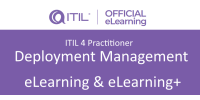In IT service management (ITSM) the IT incident – typically – is a transaction: something that comes in, generates a ticket, someone takes an action and “spits” it out at the other end.
Reflecting on this reminds me of my first role in IT, working as a help desk analyst. What I enjoyed most was providing a service and doing something that others, often, weren’t – speaking to people and taking the time to resolve what could be stressful situations.
Though this was my most satisfying role in ITSM, taking a service-focused approach went against the company’s key performance indicators (KPIs). I rebelled, feeling that my job was to provide a service, not a transaction.
Today, in most cases, these activities are still treated as a transaction, though with greater ability to automate them and be more service-focused.
Even so, I believe the human-centred ITSM touch is still lacking on occasion.
A shift to human-centred value
In the past 10 years, people’s experience as consumers has become more focused on personal values: we have greater choice in the services we consume, particularly digital.
However, I think the experience of IT and digital services delivered within organizations has lagged behind the consumer experience and companies have had to respond accordingly.
For example, this is apparent in Service Now’s “Safe Workplace” initiative to facilitate people coming back to work post-Covid 19, with employee health screening and safety management applications.
Where, previously, IT was treated as another part of a business like procurement, it’s now a key enabler. And with approaches such as ITIL® 4’s guiding principles and business relationship management, it’s now more about delivering human-centred value as well as speed and return on investment.
This heralds a great shift in mindset: seeing through KPIs and service level agreements (SLAs) to see what service value really means.
Considering people and customer experience
At present, many people around the world are tied to their remote workplaces 24/7 and are in need of a human-centred approach.
For example, if IT and digital services aren’t working for us, we can’t rely on a five-day turnaround SLA. That’s just another stress people don’t need right now.
Instead, to put technology in the service of humans we need to consider people and their customer experience – thinking beyond SLAs to focus on value, optimize and automate to meet customer demand. For example, this can involve working one-to-one with a customer to map out their journey when using a digital service. This way, it clarifies the outside-in view (empathizing with the customer’s experience) and improving the inside-out elements to deliver the service, such as process and technology. This fictitious guide, using ITIL 4 principles, shows the journey in action.
Failing to do this – to develop IT as a core part of business strategy – will degrade people’s experience and push them to seek employment elsewhere.
Calling on advanced ITIL 4 modules for guidance
With all of these challenges in mind – and being certified in both ITIL 4 Managing Professional and Strategic Leader – there is a range of guidance I call upon.
For example, in the Managing Professional modules but particularly ITIL 4 Leader Digital and IT Strategy, there is a big emphasis on the vision coming through the service value chain; creating a vision and ensuring your strategy works towards it with shared objectives for everyone.
ITIL 4 talks about value streams and processes working within practices, because processes in isolation can be slow or force people to find a work-around. However, value streams are linked to organizational goals, which makes a lot more sense.
In the past, IT was often expected (unfortunately) to stifle business innovation. Today, building a human-centred experience for both internal and external customers ensures that IT services are delivering value.
News by David Barrow – ITSM consultant








